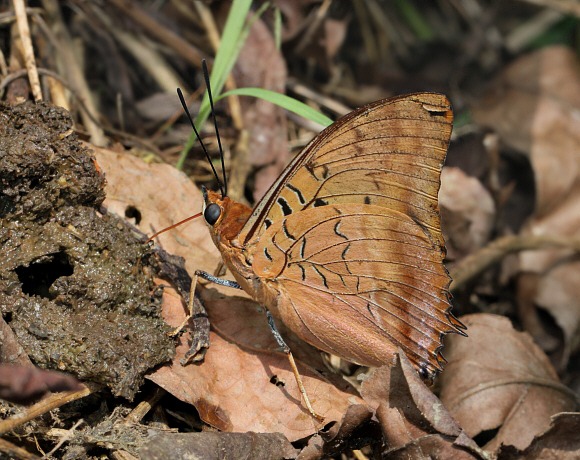
Introduction
The Charaxinae are a group of robust, medium to large Nymphalids characterised by having a rapid and powerful flight, stout bodies, triangular forewings, and a habit of feeding at dung and carrion. They are represented in the neotropics by genera including Consul, Memphis, Prepona and Agrias; in the Oriental and Australian regions by Polyura and Charaxes, and in Africa by Charaxes, Palla and Euxanthe.
The genus Charaxes contains 179 African species, one of which, C. jasius, extends its range as far north as the Mediterranean coast of Europe. Most are forest-dwellers, but several are adapted to savannah and Acacia scrub habitats.
Charaxes lucretius is found across tropical Africa from Senegal to Uganda, western Kenya and Zambia.
Habitats
This species inhabits primary and degraded rainforest at altitudes from sea level to about 800m.
Lifecycle
The larval foodplants include Hugonia ( Linaceae ) and Annona ( Annonaceae ). The butterfly has also been observed ovipositing on Trema ( Ulmaceae ).
Adult behaviour
Males often patrol back and forth along forest roads and wider sunlit trails in search of mammalian dung, on which they feed avidly. If disturbed they generally return within a few minutes.
